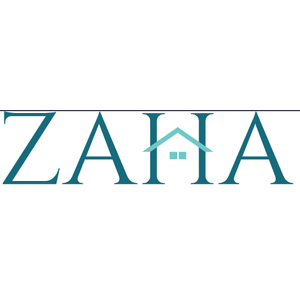Any productive business is built on a digital-first, solid-and-secure network foundation. Cloud connectivity with or without friction, remote access, and security—networks are being called upon to do it all more than ever. Outdated hardware-based approaches to getting the job done aren’t cutting it today. This has fueled the more-than-ever adoption of Network-as-a-Service (NaaS).
NaaS offers a cloud-scalable, subscription-based model that makes networks easier to manage, reduces capital costs, and improves network security services. Find out why companies are deploying this new network model and how it transforms operations with firewall and network security.
What is Network-as-a-Service (NaaS)?
Network-as-a-Service (NaaS) is a pay-as-you-use network service offering—bandwidth, routing, switching, firewalls, security—as a service. Organizations do not provision and host network devices on premises but subscribe to a third-party NaaS offer.
NaaS enables a wide variety of services:
- Virtual switches and routers
- Wi-Fi management
- Secure access service edge (SASE)
- Cloud-based firewalls
- Network performance monitoring
Key NaaS Adoption Drivers
With cloud provisioning of networking services, NaaS facilitates greater agility, simplicity, and cost optimization.
1. Simple Network Management
Legacy networks translate into buying, installing, and maintaining expensive hardware—routers, switches, load balancers, firewalls, and so on. Not just labour- and time-consuming.
NaaS eliminates all that. It offers centralized management and self-healing features with reduced IT complexity. Organisations no longer need on-premises experts to manage patching, upgrades, or scalability concerns—everything is taken care of by the service provider.
2. Flat and Economical Pricing
No upfront massive investment in network equipment with NaaS. Businesses only pay for what they use, typically monthly or annually, on a subscription model.
Benefits:
- Lower capital expenditure (CapEx)
- Part of operating costs (OpEx)
- Lower maintenance and upgrade expense
3. Enhanced Network Security Services
Optimized and robust network security solutions are needed to fight advanced cyber attacks. NaaS solutions normally consist of advanced security capabilities such as:
- Cloud-managed firewalls
- Intrusion prevention systems (IPS)
- Traffic analysis in real-time
- Threat detection and response
These solutions provide real-time security without manual deployment and management of on-premises hardware. Managed security also updates and sustains threat intelligence in real-time.
4. Advanced Firewall and Network Security Integration
Unlike traditional models, which silo network and firewall tools, NaaS brings firewall and network security together under one umbrella.
This unification provides:
- End-to-end encryption
- Centralized access controls
- Zero-trust network access (ZTNA)
- Secure policies everywhere with every endpoint
With more employees working remotely and offices repurposed as hybrids, access to company resources anywhere is priority number one—and NaaS is designed for that reality.
5. Smaller Deployment and Scaling
Scaling or roll-out of a network is achieved in days instead of weeks by using NaaS. The hardware isn’t something one has to wait for, and there are no such long setup processes. By scaling bandwidth, reach, and policy of access on demand as companies expand into new office blocks or out to remote employees, companies can easily flip over.
The gold is in digital transformation agility by high-speed businesses for a duration, project-based manufacturing, or high-speed business.
6. Hybrid and Multi-Cloud Support
Modern businesses lack a single cloud vendor. They all use some blend of public clouds (AWS, Azure, Google Cloud), private data centres, and on-premises apps. Secure and productive connectivity between them is a huge problem.
NaaS makes multi-cloud and hybrid connectivity easier with:
- Optimized routing
- Secure tunnels
- Real-time monitoring
- Cloud-native integration
It enables cross-environment resource transfer without impacting performance or network security services.
NaaS Applications in Real Life
NaaS is used by enterprises in most industries today:
- Retail Chain: Network centralization of multi-store networks, secure customer Wi-Fi security, and speedy POS transaction handling.
- Health Care Providers: HIPAA-compliant network security, remote practitioner access, and connectivity of IoT devices.
- Finance and Banking: Data synchronisation in real-time, zero-trust security architecture, and automated threat detection.
- Education: Cloud-hosted virtual classrooms, virtual apps, and student identity-based controls.
- Both network and firewall security are built into the provided service.
NaaS vs Traditional Networking: A Quick Comparison
|
Feature |
Traditional Networking |
Network-as-a-Service (NaaS) |
|
Deployment Time |
Weeks to Months |
Hours to Days |
|
Capital Expenditure |
High (requires hardware purchase) |
Low (subscription-based pricing) |
|
Maintenance |
Manual and IT-intensive |
Automated and handled by provider |
|
Scalability |
Limited and hardware-dependent |
On-demand and flexible |
|
Security |
Manual updates, siloed solutions |
Integrated, real-time threat protection |
|
Remote Access |
Complex VPN-based access |
Secure zero-trust access across locations |
|
Cloud Integration |
Requires custom setup |
Cloud-native and hybrid/multi-cloud ready |
|
IT Resource Demand |
High |
Reduced internal burden |
What to Expect from a NaaS Provider
When purchasing a NaaS provider, keep the following in mind:
- Range of Services: Do they provide all required network security and standard networking services?
- Reliability: Is uptime guaranteed through SLAs?
- Security: What network and firewall security is provided?
- Scalability: Can you rush-scale bandwidth or add users?
- Support: Is there 24/7 support?
- Integration: Does it interoperate with your current cloud infrastructure?
These factors will assist you in choosing a vendor who can address your short-term and long-term networking requirements.
Final Thoughts
As corporate infrastructure falls behind increasing business network demands, legacy network architectures become costly, rigid, and vulnerable. Network-as-a-Service (NaaS) is the clever, responsive answer now—providing businesses with an elastic, secure, and affordable way to manage their network devices.
By providing integrated network security services, scale effortlessly, and advanced firewall and network security management, NaaS places organizations ahead of their game in the hyperconnected business world today.
NaaS is the solution if your company requires easy, fuss-free, mess-free, future-proof networking infrastructure with minimal upkeep.
FAQs
Q1: Is NaaS suitable for small businesses?
Yes. NaaS is pay-as-you-go, i.e., enterprise-grade network security services and networking are made available to small and medium enterprises.
Q2: Does NaaS replace internal IT personnel?
No. NaaS eliminates IT personnel drudgery by automating patching, scaling, and security so that they can work on strategic initiatives.
Q3: Is NaaS secure?
Yes. Contemporary NaaS providers provide native network security and firewall, zero-trust architecture, and real-time monitoring to protect against advanced cyber attacks.
- Network-as-a-Service (NaaS): Benefits & Security Explained
- Discover how Network-as-a-Service (NaaS) simplifies network management, reduces costs, enhances security, and supports cloud scalability for modern businesses.
- Network as a Service
Related posts:
 Why KBH Games Is Perfect for Family-Friendly Online Entertainment
Why KBH Games Is Perfect for Family-Friendly Online Entertainment
 Build a Seamless School Portal with These Powerful Templates
Build a Seamless School Portal with These Powerful Templates
 7 Ways Aerospace Companies Are Using Composites to Elevate Aerial Robotics
7 Ways Aerospace Companies Are Using Composites to Elevate Aerial Robotics
 Samsung Galaxy S24 Ultra Price in Pakistan: A Closer Look at the Mid-Range Marvel
Samsung Galaxy S24 Ultra Price in Pakistan: A Closer Look at the Mid-Range Marvel
 The Ultimate Web Development Checklist for Building High-Performance Digital Experiences
The Ultimate Web Development Checklist for Building High-Performance Digital Experiences
 2025’s Best Tablets in Pakistan for Performance and cheap Price
2025’s Best Tablets in Pakistan for Performance and cheap Price
 10 Local SEO Tips to Boost Your Electronics Repair Shop Online
10 Local SEO Tips to Boost Your Electronics Repair Shop Online
 Optimizing Healthcare Operations in Qatar Through Dynamics 365 Finance and Operations
Optimizing Healthcare Operations in Qatar Through Dynamics 365 Finance and Operations








